How the Colorado River is Challenged by Reduced Snowpack
The Colorado River—sometimes referred to as the American Nile—sustains life for a vast expanse of the Western United States. But this resource faces immense challenges, beginning at its source in the snowy peaks of the Rocky Mountains.

While the Colorado is not the longest river in the U.S.—it’s the fifth—it is perhaps the hardest-working and most engineered river in the country. Along its 1,450-mile journey, the Colorado is siphoned off to serve over 40 million people in seven states in the U.S. and two states in Mexico.1
The Colorado River is not just important for those in the Southwest. The river irrigates over 5 million acres of farmland, and the produce from this land is sent around the country and abroad. This is especially true in winter months, as 90% of winter vegetables consumed in the U.S. originate from ground supported by the Colorado.1
Yet, our use of the Colorado River is no longer sustainable—American Rivers named it the most endangered river of 2022—due to outdated management and climate change.2
An Uncertain Future
Overuse of the Colorado throughout the West threatens this tired and tapped-out river. Rules governing water distribution are complicated—and outdated.
The Colorado River Compact—signed in 1922 by the seven states in the Colorado River Basin—serves as the basis for water allocation. A separate agreement with Mexico in 1944 ensured a set amount of water would make it downstream.3
While practical at the time, these agreements assumed the amount of water available would remain constant. Increased pressure on the river from climate change and a growing population has resulted in less water to go around. Water use outstrips supply.
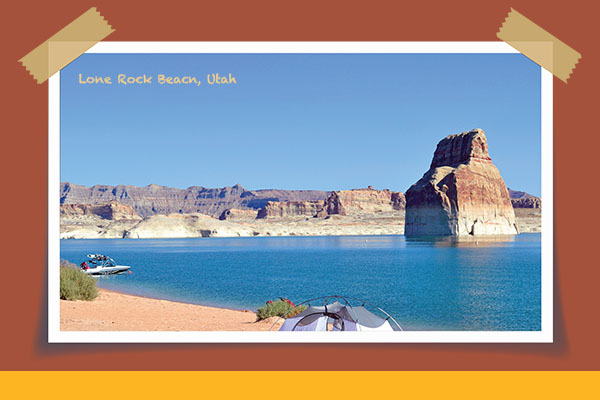
Water levels have drastically dropped in Lake Powell over the last 20 years. Popular recreation spots such as Lone Rock Beach in Utah have been transformed from a swimming and boating hotspot to a parched landscape.
In many ways, the river is the epicenter of the climate crisis in the United States. A megadrought that began in 2000 has caused water levels in Lake Mead and Lake Powell to drop precipitously—these are the two largest reservoirs in the country, both of which are fed by the Colorado River.4 These vital resources have lost about 60% of their water since the turn of the century,5 and there’s little hope this trend will reverse course.
Overall, the Colorado’s flow has declined by 20% relative to the 20th-century average.6
While overuse and scorching summer heat are significant contributors, the lack of water can be traced back to the snowpack where the river starts.
A River’s Beginning
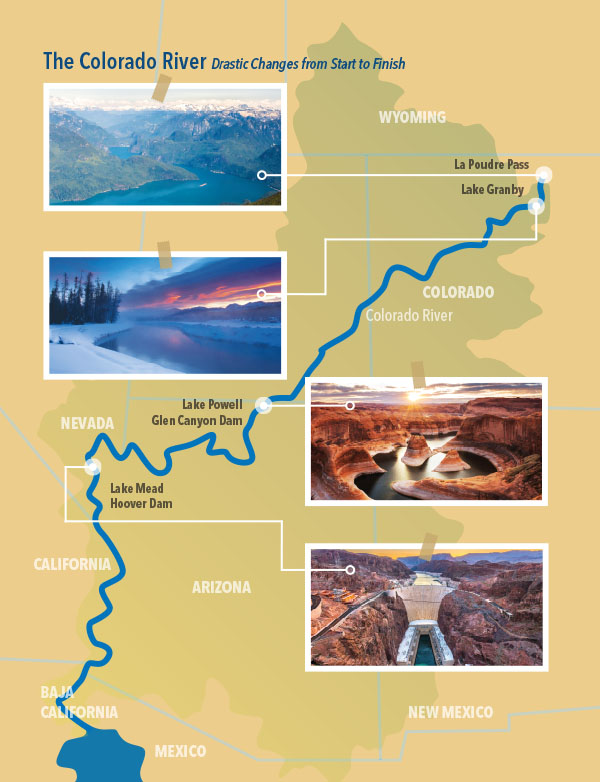
The Colorado River slices through a variety of landscapes along its 1,450-mile journey.
The Colorado River is brought to life in the Never Summer Mountains in the northern section of Rocky Mountain National Park. In winter, precipitation falls as snow on these high peaks, blanketing the landscape. The resulting snowpack serves as a giant, frozen water reservoir. During the spring thaw, meltwater is gradually released, replenishing the landscape and feeding mountain streams.
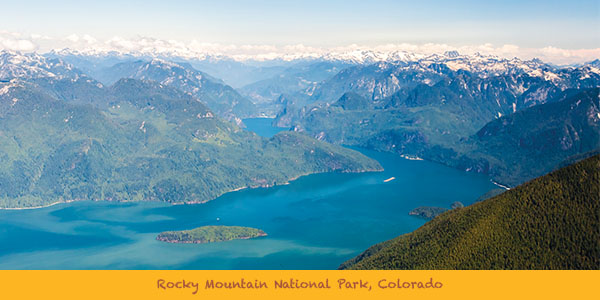
The headwaters of the Colorado River can be found high in the Never Summer Mountains in Rocky Mountain National Park. Meltwater from the snowpack collects in La Poudre Pass before flowing south toward Lake Granby.
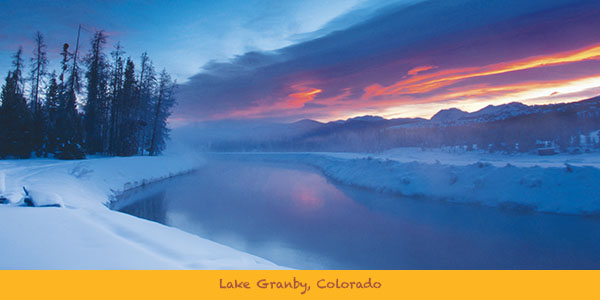
It's at Lake Granby where a significant portion of the Colorado River's water get pumped to cities on the eastern side of the mountains.7
Sitting at 10,184 feet (3,104 meters) along the Continental Divide, La Poudre Pass collects a significant portion of the meltwater from the Never Summer Mountains, making this high mountain pass the genesis of the Colorado River. The river gains strength as it flows toward Lake Granby just south of the national park—this is the first location where a lot of the water from the Colorado gets diverted.7
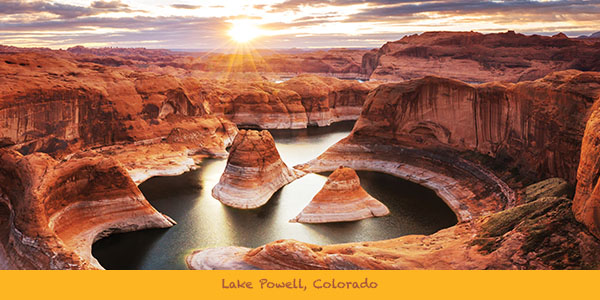
Fed by the Colorado River, Lake Powell is the second-largest reservoir in the United States. In addition to serving as a water source, it supports power generation at Glen Canyon Dam.
Serving as the Colorado River’s source, the snowpack dictates the amount of water available hundreds of miles away. Unfortunately, this source is no longer reliable, only adding to the challenges this hard-working river faces.
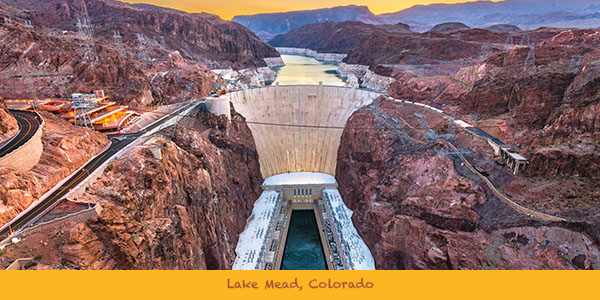
After leaving Lake Powell, the Colorado River winds its way through the Grand Canyon before flowing into Lake Mead—the largest reservoir in the country. There it is used to generate power at Hoover Dam.
A New Normal
A drought is typically described as a temporary—but sometimes prolonged—reduction in precipitation, while aridification describes a more permanent transition to a drier environment.8
In the Western United States, aridification is how scientists are starting to describe the profound impacts of climate change on the landscape—this includes some fundamental changes to the snowpack that feeds rivers like the Colorado.
Less Snowfall
April snowpack in the Western United States declined by an average of 23% from 1955 to 2022.9 When looking at monitoring stations near Never Summer Mountains, most of them also saw lower snowpack levels during this same period.
Data from the SNOTEL network—automated snow telemetry instruments that have been used since the 80s—shows how much variability there is in yearly snowpack within the Colorado River headwaters.
In 2011, the snowpack on May 1st was the deepest it had been in decades (26.3 in. SWE; 66.8 cm SWE). Just one year later (2012), the snowpack on May 1st was the lowest it had been in decades (3.8 in. SWE; 9.7 cm. SWE). More recent examples of variability include 2019 (well above average) and 2021 (well below average).10
Snowpack in 2022 was within 0.5 in. (1.3 cm) SWE of average on April 13th—the date of the median snowpack peak in the Colorado headwaters.10 Despite being close to normal, concerns for Colorado River flows still persist because peak snowpack depth isn’t the only consideration when evaluating the amount of water that’ll make it to the Colorado River.
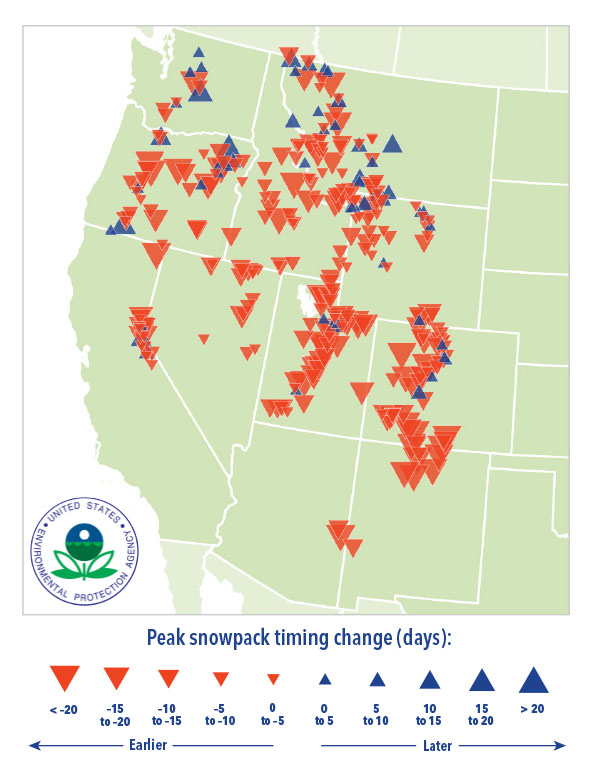
Trends in April Snowpack in the Western United States, 1955–2022.9
How Wet Is Snow?
Snow can have very different moisture levels (i.e., densities). In general, 10 in. (25.4 cm) of snow has about 1 in. (2.5 cm) of water content. Light, powdery snow is much less dense—only 1 inch of water in up to 25 in. (63.5 cm) of snow. On the opposite end, heavy snow has a lot of moisture and is very dense—up to 1 inch of water in only 5 in. (12.7 cm) of snow.11
Once on the ground, snow settles. Due to this compaction and the varying moisture levels, snow depth is not the most relevant measure of snowpack for water resource management.
The majority of snowpack data is reported in Snow Water Equivalent (SWE), as it reflects the depth of water that would result if all of the snow melted.9
Check out how the USDA’s Natural Resources Conservation Service measures SWE!
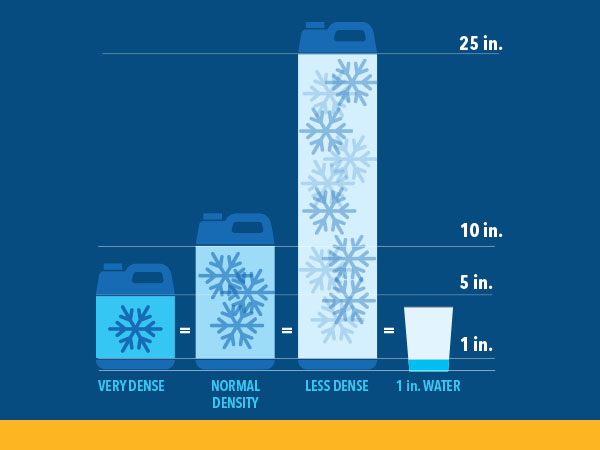
The moisture content of snow can vary drastically. Dense snow holds a lot of moisture, while powdery snow does not.
Earlier Melting
In addition to the amount of snow covering the mountains, when and how quickly it melts is a critical factor in river flow. It’s more beneficial for water supplies if melting occurs gradually. This is more efficient and does a better job recharging dry waterways and plant life than the rapid melting of the snow. 12
There is a shift to earlier peak snowpack in the West, meaning there’s less water stored as snow later in the spring. Across all snowpack monitoring sites in the Western United States, peak snowpack has shifted by an average of eight days earlier in the year based on data collected from 1982 to 2021.9
In 2022, Colorado’s snowpack melted rapidly due to relatively high temperatures, especially in the southwest portion of the state, where the snow was essentially gone by the middle of May. This was nearly a month earlier than normal. 13 Closer to the Colorado River headwaters, snowpack was gone by the middle of June, several days earlier than the average.10
Once the snow does melt, it doesn’t always end up in a waterway—dry plants, land, and air can soak it up.
Climate Change Indicators

Change in Peak Snowpack Timing in the Western United States, 1982–2021.9
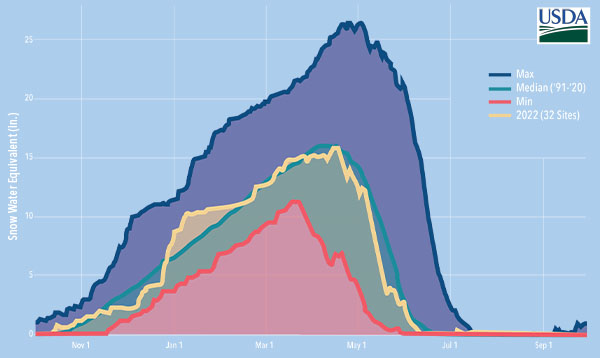
This graph charts the snow water equivalent (SWE) in Colorado headwaters from 1986 to 2022.10
Thirsty Environment
As snow melts, it first saturates the ground and is taken up by vegetation. The atmosphere can also take up some moisture.
A thirsty environment—acting as a dry sponge—can absorb a significant amount of meltwater before it makes it to a waterway. Therefore, even a substantial snowfall during the winter may not make much of a difference in the Colorado River’s flow, as the surrounding dry environment must be satisfied first.
It would take several years—perhaps many—of above-average snowfall to turn around the current situation for the Colorado River and those that depend on it. At this point, that seems unlikely. But not all hope is lost.
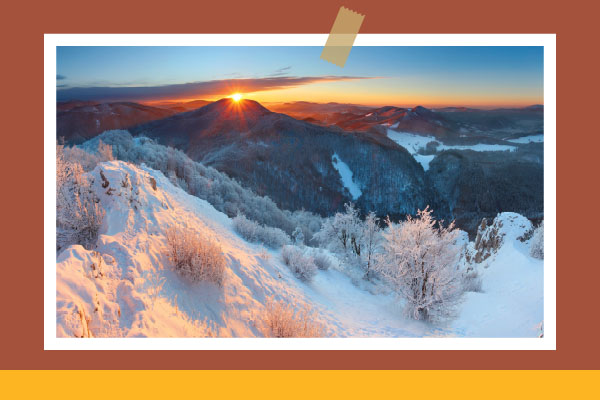
A dry environment can absorb a lot of meltwater from snowpack, preventing it from replenishing mountain streams.
What Can Be Done?
While the Colorado River is in a dire state, it can be a sustainable water source if we change the way we use the river. Individual actions to lower water consumption can make a difference, but federal and state governments must make sweeping changes to ensure this precious resource is used wisely.
The Colorado is already one of the most managed rivers in the world. For example, the U.S. federal government announced in May 2022 the unusual step of retaining water in Lake Powell rather than releasing it downstream to Lake Mead. This was done to ensure Lake Powell can continue supporting power generation for the next year at the Glen Canyon Dam.4
Holding or releasing water from one part of the river system to another does nothing to solve the root of the issue—we’re using more water than the river provides. Some cuts have already been made. In 2021, the first-ever water shortage was declared for Lake Mead, triggering supply cuts to Arizona farmers.14
Western states relying on the Colorado River have attempted to negotiate their own water use reductions. But as of late October 2022, no meaningful progress has been made, prompting the federal government to issue a warning stating they would step in and impose mandatory cutbacks if the states could not agree.15
No doubt these painful water supply cuts are needed to protect the Colorado River. Still, these reductions may be more readily accepted by the general public if they understand just how bad the situation is.
Driving public awareness of the Colorado’s current situation has been a challenge. News headlines often focus on objects—such as bodies and cars—that are seen as a result of Lake Mead’s perilously low water levels. While interesting, these stories overlook the future that awaits the American West if the Mighty Colorado continues to dry up. The climate crisis is a water crisis—this is something we all need to take seriously.

Sources